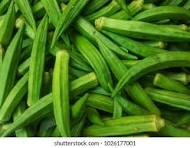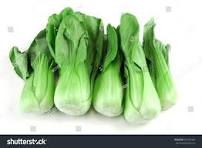
Eat Your Way to Better Health:
Why Leafy Greens Are Your Magic Weapon

Leafy greens sometimes get stereotyped as the soggy and wilted salad sidekick taking up space in our refrigerator’s crisper drawer. But the fact is they’re so much more! These nutritional powerhouses are loaded with vitamins, minerals, fiber and antioxidants that fuel our bodies and minds in countless ways.
Think of Popeye eating his spinach, but instead of only bulging biceps, he’s got strong bones, a sharp mind, radiant skin and a healthy immune system. That’s the kind of muscle leafy greens can yield when regularly incorporated into your diet. And, it doesn’t have to mean more salads. Leafy greens can be roasted, sauteed and blended into your favorite smoothies or dips to add depth of flavor and a healthy nutrient boost.
The health benefits of leafy greens
Leafy green vegetables like kale, spinach, collard greens, Bok Choy, beet greens, arugula and Swiss chard are jam-packed with essential nutrients your body needs, including:
- Vitamins A, C, K and folate, which are crucial for healthy vision, immunity, bone health and cell growth.
- Minerals like calcium, potassium, magnesium and iron, vital for strong bones, healthy muscles, nerve function and oxygen transport.
- Fiber, which promotes healthy gut bacteria, aids digestion, regulates blood sugar, and can reduce inflammation and bloating.
- Antioxidants, which combat cellular damage and support healthy aging by reducing the risk of chronic diseases.
- Beyond their impressive nutrient profile, studies suggest when you incorporate leafy greens into your diet they:
- Support brain health: The nutrients in leafy greens may help improve memory and protect against age-related cognitive decline and dementia.
- Strengthen bones: Calcium and vitamin K work together to build strong bones and reduce the risk of osteoporosis and fractures, especially as we age.
- Reduce risk of chronic disease: Research shows leafy greens may help lower the risk of heart disease, certain cancers, macular degeneration and Type 2 diabetes.
- Promote weight management: Leafy greens are low in calories and high in fiber, which helps fill you up and keeps you feeling full longer, reducing cravings and unhealthy snacking.
- Act as a natural detoxifier: Leafy greens contain chlorophyll, which aids the body’s natural detoxification process.
- Ready to unlock the power of leafy greens?
- Still need convincing on incorporating more leafy greens into your diet? Getting started is easier than you might think!
- First, start small. Add a handful of spinach to your morning smoothie, scrambled eggs or turkey sandwich.
- Then, get creative by experimenting with different greens like Swiss chard in stir-fries, collard greens in soups or romaine lettuce in wraps. You also can try kale chips as a healthy snack or blend spinach into your favorite pasta sauce, casseroles and dips.
- The secret to getting the most bang for your buck is mixing it up. Combine different leafy greens for a wider range of nutrients and flavors.
- Tips on washing and storing greens to keep them fresher longer
- Like any fresh produce, leafy greens need to be handled and prepared safely to avoid food-borne illnesses. If the label on the package says, “ready to eat”, “triple washed” or “no washing necessary”, you don’t need to do anything extra before consuming.
- But for those that have not been pre-washed, it’s important to rinse them thoroughly under running water and store them in a clean refrigerator with the temperature set to 40 degrees Fahrenheit or cooler.
- So, why not incorporate a leafy green into your dinner plans tonight and eat your way to better health. Your body and mind — and taste buds — will thank you.
- The 13 Healthiest Leafy Green Vegetables
- Leafy green vegetables like kale and spinach are high in vitamins, minerals, and fiber. Adding a variety of greens to your diet may help boost brain health and lower your risk of some diseases.
- Leafy green vegetables are an important part of a healthy diet. They’re packed with micronutrients and flavor, and they’re low in calories.
- Eating a diet rich in leafy greens can offer numerous health benefits, such asTrusted Source reducing your risk of obesity, heart disease, high blood pressure, and mental decline.
- Here are 13 of the healthiest leafy green vegetables to include in your diet.
- 1. Kale
- Kale is a nutrient-dense vegetable packed with many vitamins, minerals, and antioxidants.
- For example, 1 cup (21 grams (g)) of raw kale packsTrusted Source:
- 68% of the Daily Value (DV) for vitamin K
- 6% of the DV for vitamin A
- 22% of the DV for vitamin C
- It also contains antioxidants like lutein and beta-carotene, which may reduceTrusted Source the risk of diseases caused by oxidative stress.
- Kale can be consumed in many different ways, such as eaten raw, cooked, or blended in a smoothie.
- A 2019 studyTrusted Source found that steaming kale preserved most of its nutrients out of all the cooking methods in the study. These included boiling, pressure cooking, microwaving, and vacuum sealing.
- 2. Microgreens
- Microgreens are nutrient-dense, immature greens produced from the seeds of vegetables and herbs. They typically measure 1–3 inches (2.5–7.5 centimeters).
- Since the 1980s, they have often been used as a garnish or decoration, but they have many more uses.
- Microgreens are rich in micronutrients like vitamins C, E, and K.
- They’re also packed withTrusted Source biological phytochemicals that could play a big role in improving general health and preventing diseases. These may include ascorbic acid, β-carotene, and phenolic antioxidants, among others.
- Microgreens can be grown in the comfort of your own home all year round, making them easily available.
- Collard greens
- Collard greens are loose, leafy greens. Their name comes from the word “colewortTrusted Source“, which includes it in the same family as kale, cabbage, and spring greens. They have thick leaves that taste slightly bitter.
- Collard greens are a good source of:
- calcium
- vitamin A
- vitamin B9 (folate)
- vitamin C
- They’re also one of the best sources of vitamin K when it comes to leafy greens. One cup (36 g) of raw collard greens packs 131%Trusted Source of the DV for vitamin K.
- Vitamin K is known for its roleTrusted Source in blood clotting and improving bone health.
- Spinach
- Spinach is a popular leafy green vegetable and can easily be incorporated into a variety of dishes, including soups, sauces, smoothies, and salads.
- One cup (30 g) of raw spinach providesTrusted Source:
- 121% of the DV for vitamin K
- 16% of the DV for vitamin A
- 12% of the DV for manganese
- It’s also packed with folate, which plays a key roleTrusted Source in red blood cell production. It may also help preventTrusted Source neural tube defects in pregnancy, such as spina bifida.
- Cabbage
- Cabbage is formed of clusters of thick leaves that come in green, white, and purple colors.
- It belongsTrusted Source to the Brassica family, along with Brussels sprouts, kale, and broccoli.
- Vegetables in this plant family contain glucosinolates, which give themTrusted Source a bitter flavor.
- Research suggests that foods with these plant compounds may have cancer-protective propertiesTrusted Source.
- Another benefit of cabbage is that it can be fermented and turned into sauerkraut. This food provides numerous health benefits, such asTrusted Source reducing inflammation, improving your digestion, and supporting your immune system
- 6. Beet greens
- Beets are colorful, vibrant vegetables that have an impressiveTrusted Source nutrient profile. Although beets are commonly used in dishes, the leaves are often ignored.
- Beet greens are edible and rich in nutrients. One cup (38 g) of raw beet greens containsTrusted Source:
- 127% of the DV for vitamin K
- 13% of the DV for vitamin A
- 12% of the DV for vitamin C
- They also contain the antioxidants zeaxanthin and lutein. These may help reduceTrusted Source the risk of eye disorders, such as macular degeneration and cataracts.
- Beet greens can be added raw to salads and soups, or sauteed and eaten as a side dish.
- 7. Watercress
- Watercress is an aquatic plantTrusted Source from the Brassicaceae family. It’s similar to arugula and mustard greens.
- It’s said to have healing properties and has been used in herbal medicine for centuries. However, no human studies have confirmed these benefits so far.
- One cup (34 g) of raw watercress providesTrusted Source:
- 17% of the DV for vitamin C
- 6% of the DV for vitamin A
- 71% of the DV for vitamin K
- Due to its bitter and slightly spicy flavor, watercress makes a great addition to neutrally flavored foods.
- 8. Romaine lettuce
- Romaine lettuce is a common leafy vegetable with sturdy, dark leaves with a firm center rib. It has a crunchy texture and is a popular lettuce, particularly in Caesar salads.
- It’s a good source of vitamins A and K, with 1 cup (47 g) providing 23%Trusted Source and 40% of the DVs for these vitamins, respectively.
- What’s more, a 2021 studyTrusted Source in 16 healthy young males found that adding lettuce or watercress to a meal significantly lowered blood sugar and insulin levels following the meal.
- 9. Swiss chard
- Swiss chard has dark green leaves with a thick stalk that is red, white, yellow, or green. It’s often used in Mediterranean cooking and belongs to the same family as beets and spinach.
- It has an earthy taste and is rich in minerals and vitamins, such asTrusted Source magnesium and vitamins A, C, and K.
- Swiss chard also contains a flavonoid called syringic acid, which may be beneficial for lowering blood sugar levels.
- While many people typically throw away the stems of the Swiss chard plant, they’re crunchy and highly nutritious.
- Next time, try adding all parts of the Swiss chard plant to dishes such as soups, tacos, or casseroles
- 10. Arugula
- Arugula is a leafy green from the Brassicaceae familyTrusted Source. It goes by many different names, such as rocket, colewort, roquette, rucola, and rucoli.
- Arugula has a peppery taste and small leaves that can easily be incorporated into salads or used as a garnish.
- Arugula is packed with nutrients. One cup of raw arugula (20 g) providesTrusted Source:
- 5% of the DV for folate
- 3% of the DV for vitamin A
- 3% of the DV for vitamin C
- 18% of the DV for vitamin K
- Like other leafy greens, arugula is a great sourceTrusted Source of dietary nitrates, which turn into nitric oxide in your body.
- The benefits of nitrates are debated. However, some studiesTrusted Source found that they may help increase blood flow and reduce your blood pressure.
- 11. Endive
- Endive (pronounced “N-dive”) belongs to the Asteraceae family. It’s less well known than other leafy greens, possibly because it’s difficult to grow.
- Endive is curly and crisp in texture. It has a nutty and mildly bitter flavor and can be eaten raw or cooked.
- One cup (50 g) of raw endive leaves packsTrusted Source:
- 97% of the DV for vitamin K
- 6% of the DV for vitamin A
- 18% of the DV for folate
- 97% of the DV for vitamin K
- 6% of the DV for vitamin A
- 18% of the DV for folate
- Like other leafy greens, endive is good a source of kaempferol. This antioxidant has been shown toTrusted Source reduce inflammation and inhibit the growth of cancer cells in test-tube studies.
- 12. Bok choy
- Bok choy is a type of Chinese cabbage.
- This leafy green is packed with micronutrients. One cup (70g) of raw Bok choy containsTrusted Source:
- 36% of the DV for vitamin C
- 12% of the DV for folate
- 17% of the DV for vitamin A
- 27% of the DV for vitamin K
- Boy choy has thick, dark green leaves that make a great addition to soups and stir-fries.
- 13. Turnip greens
- Turnip greens are the leaves of the turnip plant, which is a root vegetable similar to beetroot.
- These greens pack more nutrients than the turnip itselfTrusted Source. One cup (55 g) of raw turnip greens includesTrusted Source:
- 8% of the DV for calcium
- 33% of the DV for vitamin C
- 27% of the DV for folate
- 35% of the DV for vitamin A
- 11% of the DV for vitamin E
- 115% of the DV for vitamin K
- They have a strong and spicy flavor and are often enjoyed cooked rather than raw.
- Turnip greens are considered a cruciferous vegetable. These have been shown to decrease your risk of health conditions, such asTrusted Source heart disease and cancer.
- Turnip greens also contain several important phytochemicals that may play a role in reducing stress in your body. These includeTrusted Source:
- glucosinolates
- isothiocyanate
- phenolic compounds
- flavonoids
- organic acids
- Turnip greens can be used as a replacement for kale or spinach in most recipes.
- Frequently asked questions
- What are examples of leafy greens?
- Some examples of leafy greens include kale, spinach, arugula, and endive, as well as greens from beets, collards, and turnips.
- Which leafy green is the healthiest?
- There isn’t a single, healthiest leafy green, but leafy greens may be richer in some nutrients than others. For example, arugula contains almost six times moreTrusted Source of the antioxidant kaempferol than endive. On the other hand, 1 cup (50 g) of raw endive leaves packs 97% of the DV for vitamin K compared to 1 cup (20 g) of arugula, which packs 18%.
- What are the 5 green leafy vegetables?
- Some leafy green vegetables include Bok choy, Swiss chard, microgreens, kale, and spinach, among others.
- The benefits of eating green vegetables everyday
- Did you know that eating your greens can actually help you slow down the aging process? It might sound like something your mom would have told you to get you to finish off your broccoli, but it’s a proven scientific fact.
- Eating leafy greens helps to delay the shortening of telomeres, the protective tips on DNA that naturally shorten with age. When a telomere is completely gone, the cell dies. So, the more kale and broccoli florets you’re eating, the better!
- But how can you get a hearty serving of green veggies everyday, especially when you’re juggling work, family, and personal responsibilities as well?
- That’s where smoothies come in to save the day!
- Why smoothies?
- Smoothies are a good way to consume quality green vegetables that will take only moments to prepare and, by adding fruit, they taste delicious. There are also amazing health benefits—and they are a great way to get your whole family eating more greens without having a dinner table battle over brussel sprouts.
- What are the health benefits?
- It seems as though every time leafy green vegetables are put under the microscope, so to speak, they come out with yet another amazing benefit of eating your greens every day.
- In 2021, a study concluded that eating 1 cup of leafy greens a day lowers your risk of heart disease. Eating 1 serving of leafy green vegetables has also been associated with slower cognitive decline and increased muscle strength.
- Add to that the fact that most leafy green vegetables contain high levels of fiber, iron, magnesium, potassium, folate, and calcium, are rich in vitamins A, C, E and K, and have very little sodium, cholesterol, and carbohydrates, you can see why green vegetables should be a part of your daily diet.
- But let’s dig a little deeper into why the fiber found in leafy greens is so important.
- What exactly is fiber?
- It’s the structure of natural plants – fruits and vegetables – that facilitates the digestion of food. Fiber helps you feel more full, gently cleans out the colon, and removes toxins and other waste from your system. It also feeds and nourishes beneficial bacteria – the ones that work hard to keep us healthy. Think of it as a kitchen sponge, moving things along and cleaning as it goes.
- Should all sources of fiber do this for us?
- Not exactly. You see, there is fiber in other foods too, such as wheat. Keep that sponge in mind to get a clearer picture of what different types of fiber there are: the soft side of a sponge is like the fiber found in vegetables, oats and other solubles. The fiber found in wheat is more like the abrasive side of the sponge — instead of moving things along, it takes a harder approach to your stomach, especially for those who are celiac or have a gluten intolerance.
- Will my smoothie add good fiber into my system?
- A smoothie packed with leafy green veggies will help you to increase the good fiber you ingest – and the fact that it’s green will play a big part in its health benefits. Green veggies are packed with vitamins, minerals and antioxidants, which help fight disease. A smoothie fortified with milk or yogurt will also provide potassium and calcium that can strengthen bones and lower blood pressure, which can contribute to better heart health.
- Does blending destroy any of the goodness?
- No, not in the way heating vegetables does. Whenever you heat your vegetables, valuable vitamins are lost. This is one of the advantages of the smoothie: you’re dealing with raw ingredients so all that vitamin C will go straight into your system.
- What are the top 3 green vegetables?
- Kale. This form of cabbage has so much packed into it – it’s a great source of vitamin C, high in beta-carotene and lutein, plus it’s the safest way to get our vitamin A intake, which contributes to the health of your bones and liver, for example. Kale is a good source of vitamin K, too, which helps prevent bone fractures.
- Spinach. It’s nutrient dense, high in fiber, antioxidants and vitamin C. It’s low in calories and good for healthy eyes, hair and skin.
- Watercress. Like the others, this often-overlooked vegetable is high in antioxidants and beta-carotene, calcium and vitamin K, and it has anti-inflammatory properties, which is great news for people suffering from arthritis.
- What part of the plant is best in a smoothie?
- The whole thing! That’s another great thing about getting your greens in a smoothie. There are nutrients in every part of the vegetable and when you blend it, you can use it all. As a rule, the darker green it is, the more you want it in your smoothie. The colour is an indication of where the nutrients are. Don’t discard the stalks, either, because they add fiber.
- But what about the taste?
- Sure, blending spinach and milk together does not sound appetizing. But you have lots of choices to add some sweetness to your smoothies to make them taste delicious — dates to add sweetness (and more fiber), honey, numerous fruits that include raspberries, bananas, mangos, apples, pineapple, etc. And by adding healthy green vegetables into your smoothies, kids will not only benefit from the added content that’s good for them but also a delicious sweet treat.
- Anything else to think about when it comes to green smoothies?
- Another note of caution has to do with vitamin K, found in nearly all leafy green vegetables. If you’re being prescribed a blood-thinner, and are significantly increasing your vegetable intake, consult your doctor who can monitor your medication.

